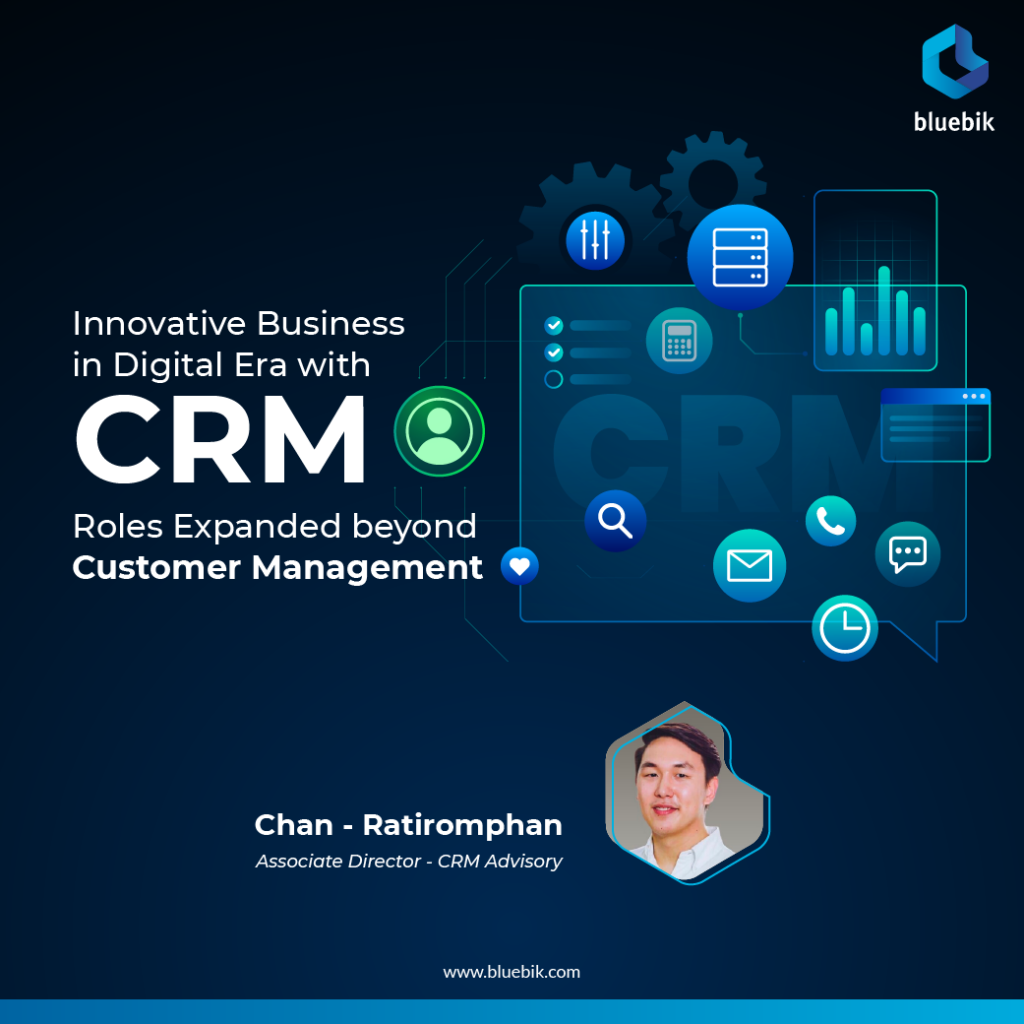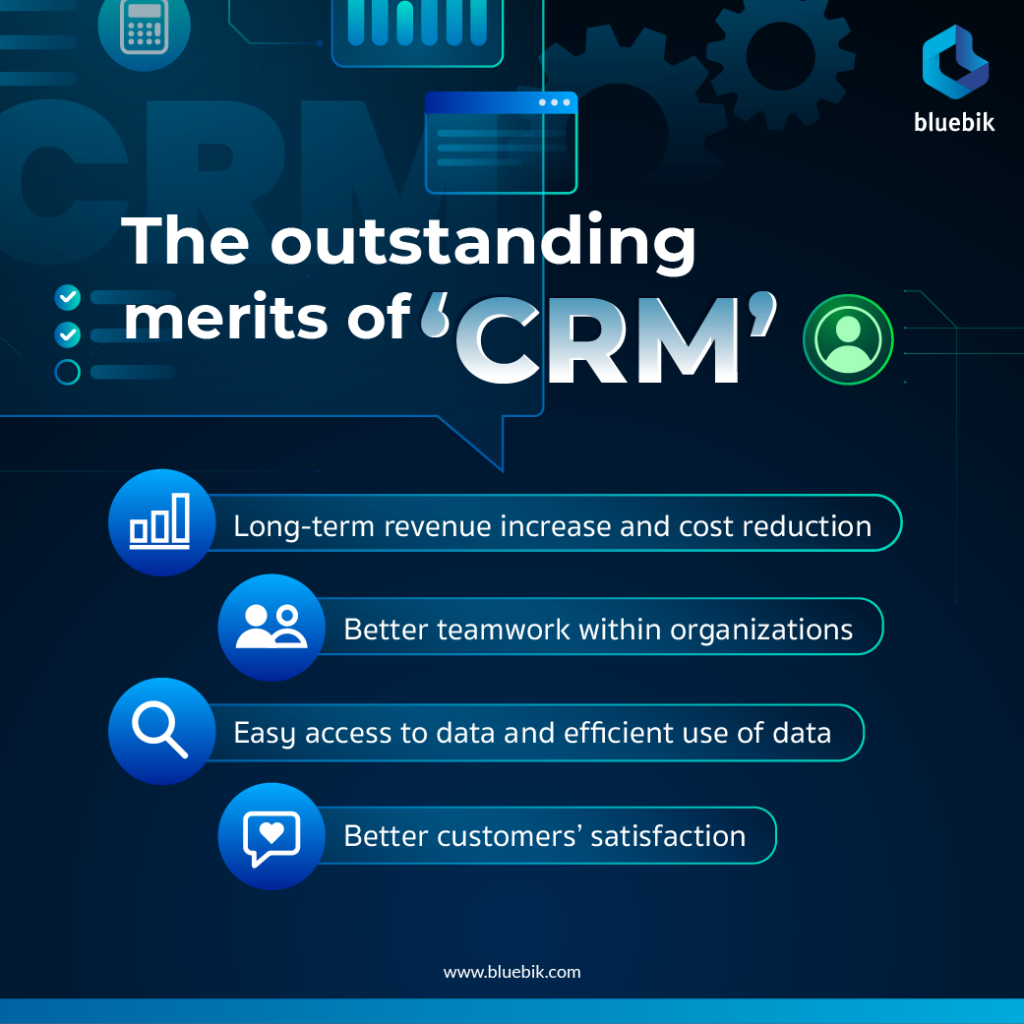
When it comes to Customer Relationship Management (CRM), most people think about an IT system used to manage relationships with customers. A CRM system is viewed as complicated because it concerns many parts of an organization. Besides, it is quite costly, difficult to be evaluated for its return on investment (ROI) and suitable only for large organizations.
In fact, CRM can be used for many other purposes beyond the management of customer relationships because its application can cover business stakeholders such as potential customers, suppliers, employees and business partners. With the wider application, organizations can interact with the mentioned parties more efficiently.
Therefore, CRM should be one of the strategies of an organization rather than being just an installed IT system. It should be used for the redesign of work processes to let people in an organization or stakeholders cooperate efficiently and achieve their goals to deliver value to target groups of customers and the organization itself. CRM can be an important mechanism for the purpose. So, the evaluation of a CRM system should be based on a big picture and cover the opportunity cost that would occur without CRM. The evaluation should not focus on the ROI of a CRM system alone.
Besides, a CRM system can be of use to organizations in various sizes, from small to large ones. Its application depends on the directions and specific natures of organizations. If an organization chooses the CRM system that suits its requirements and understands the system, it will find that CRM can undoubtedly increase its competitiveness and efficiency. Therefore, the use of a CRM system to revolutionize operations is one of important mechanisms to ready organizations for business in the digital era.
Why is a CRM system necessary?
With a CRM system, business organizations can develop long-term bonds and good ties with their stakeholders and customers because they can collect and process data and have the data insights that help them improve their end-to-end services to meet customers’ demand. Business organizations can also increase the efficiency of their management and their operations can be organized, accelerated and evaluated clearly.
With a CRM system, organizations can take business action efficiently in proper ways and at appropriate times and have all necessary data including data about sales, services and marketing. Organizations can use the data that their CRM system stores in digital forms on their databases. Their CRM system can supply data for use with tracking report dashboards. Besides, it can communicate with customers and manage customers’ expectations efficiently due to its in-depth information.
The outstanding merits of CRM
1.) Long-term revenue increase and cost reduction – A CRM system can be used to streamline work processes, cut personnel costs and create new business opportunities.
2.) Better teamwork within organizations – Peer units at an organization see the important data that they need from each other in real time. This speeds up operations and decisions and reduces the mistakes that could otherwise occur from miscommunications. Besides, many developers have introduced CRM systems in low code/no code platforms which allow organizations to accelerate their operations and change their work processes faster because such platforms are less dependent on IT personnel.
3.) Easy access to data and efficient use of data – All data processed through a CRM system are digitized and thus users can acquire data right away. Besides, users can have the data analyzed through data analytics modules to prepare reports or dashboards to facilitate the decisions and plans of executives.
4.) Better customers’ satisfaction – If organizations have complete data in real time and manage their operations more efficiently, they can meet customers’ demand quickly, effectively and precisely.

A close look at CRM abuse
1.) CRM installed without clear understanding of customers and users – A CRM system installed in such a manner finally proves to be impractical because it was not designed to meet the demand of real users.
2.) CRM used without the relevant adjustments of work structures – A CRM system cannot improve the operations of an organization as expected. When a CRM system is used, work structures must be adjusted accordingly to the new system to prevent work duplication between new and old systems.
3.) The more CRM systems, the better? – Although a CRM system facilitates work, it does not mean that the more tools you have, the faster you can work. The key to the use of CRM is its proper application to match the strategies and requirements of the organizations that use it, for the sake of the maximum benefits of the organizations.
4.) A single CRM model used for customers and all groups of users – Different groups of users and customers have different kinds of demand. So, CRM must be adjusted to meet their different needs.
Steps before CRM use at organizations
1. Set procedures for CRM introduction at an organization so that members of the organization will have sight of the big picture and see collaboration within the organization.
2. Identify the users and stakeholders who will use CRM.
3. Identify what can pose operational issues and must be addressed urgently.
4. Set the development goals that can be achieved with the use of CRM.
5. Choose the CRM systems that match the requirements of organizations. For example, large and complex organizations with many users who must cooperate may choose the CRM systems of leading brands which have various features to support a wide range of operations and can handle considerable transactions. Major brands include Salesforce, Dynamics 365 of Microsoft and SAP CRM.
CRM helps organizations achieve their strategic goals faster. Therefore, it is important to have a new and positive vision of CRM. The evaluation of an installed CRM system should cover a wide range of factors including revenue, times and opportunity costs. Doing business nowadays requires not only understanding but also reading (customers’) minds. This produces strong survivors in the business world of the digital era where customers are its center and changes happen swiftly.




